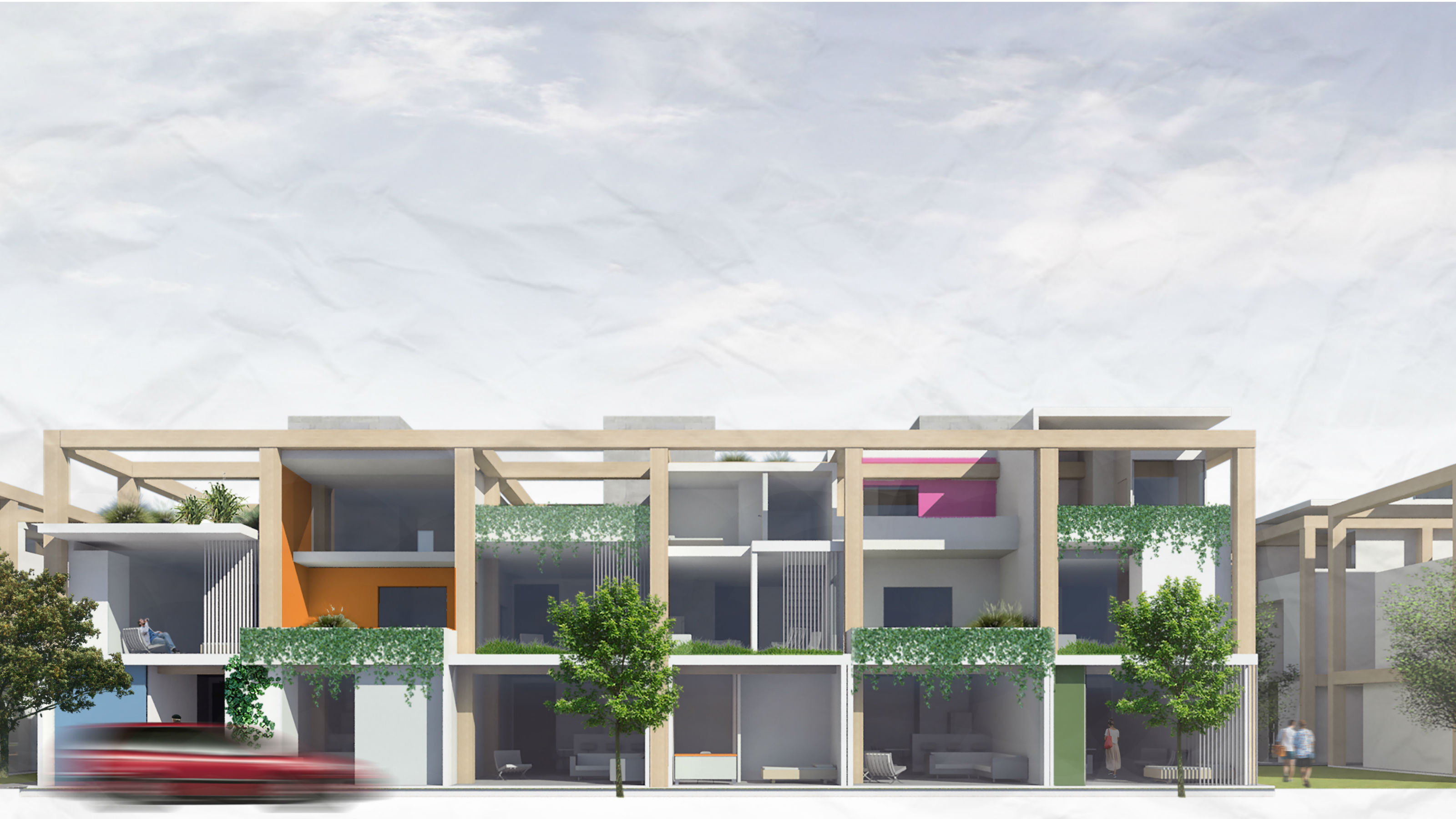Innovation and collaboration wins 2018 ArchEngBuild
Architecture student Georgia Peacocke was part of the winning team in this year’s Building Research Association of New Zealand (BRANZ) ArchEngBuild challenge, with an innovative housing complex design.
This interdisciplinary three-day competition brings together 30 students in architecture, engineering and construction management from tertiary institutes around the country. Working in teams of three, with one representative from each discipline, students respond to a real-life brief.
The challenge this year was to design a multi-generational Medium Density Housing (MDH) community complex.
The winning team—Georgia Peacocke (studying architecture at Victoria University of Wellington), Monica Varrie (studying construction at Unitech) and Liam Crawford (studying engineering at Auckland University of Technology)—designed an innovative and adaptive complex called Tupu.
“The name Tupu means to grow and develop, which is the central idea of our concept,” says Peacocke.
“Our MDH design is essentially a set block module, a complex of several prefabricated modules or ‘pods’ in a central structure.
“The basic structure is always the same, but the pods can be manipulated depending on different needs—for example, how many people are in each family, what space is required, whether you want to have a separate studio, and so on. The buildings can be adapted for the specific circumstances of the people living there. They’re like a blank canvas that you can personalise for your family. This adaptability helps to future-proof the buildings."
Peacocke says Tupu aims to provide a cost-effective housing option that is affordable to build and maintain.

The judges were impressed by the future thinking demonstrated in the concept.
“We need clever smarts, so we can build more economically and do better things for the urban environment. We also need to be more sustainable and efficient in what we do. You can’t achieve a great outcome—a brilliant building—without working in collaboration,” says Simon Novak, Director of Novak + Middleton Architects, on behalf of the judges.
“This design showed fresh blue-sky thinking. It was really refreshing and we hope some of this thinking can put out in the marketplace,” he says.
For many students, ArchEngBuild was their first opportunity to collaborate across disciplines.
“In my five year studying architecture, I’ve never worked alongside an engineer and a building scientist. This challenge gets you started before you go into the workforce, where you really do have to work together,” says Peacocke.
“A key factor in our team winning was that we had such a good collaborative process. It wasn’t the architect leading it, but all of us together coming up with ideas and working together. Our concept began with the structure, and that’s what influenced the end design.”
Hamish Parbhu, another architecture student from Victoria University of Wellington, also took part in this year’s challenge.
“I’ve done some work in medium density housing,” says Hamish, “and the problems are less about architects coming up with designs, and more about actually building them.”
Learning about the other disciplines was a key part of the event for him. “We’re going to work with them in practice, so learning what background they have – particularly the engineers – was very valuable.”
This collaboration is at the heart of the ArchEngBuild challenge.
“The main aim of the Challenge is to inspire a better built environment through cross-discipline teamwork,” says Chelydra Percy, BRANZ CEO.
“Students in ArchEngBuild go away with a deeper understanding of the roles and intricacies of each other’s disciplines. These future industry leaders also gain valuable contacts across our industry and we hope they seek a career that involves working in cross-sector teams. This ultimately benefits everyone living in our communities,” she said.
